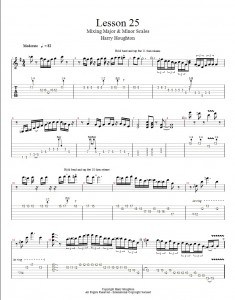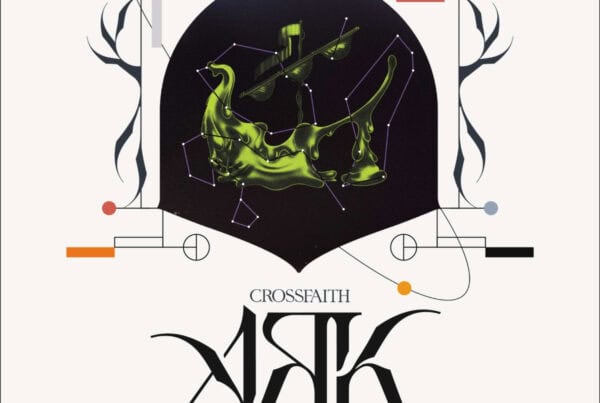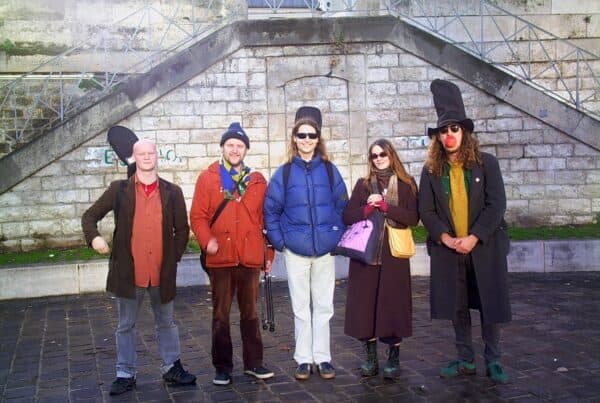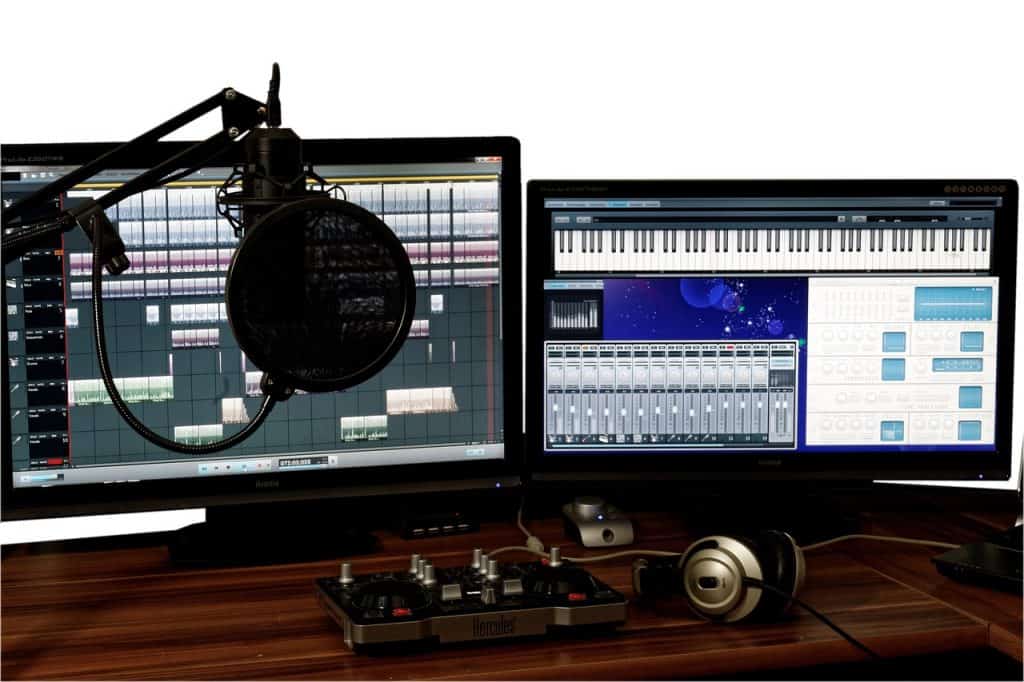This month’s lesson is a sixteen bar solo I have submitted to be part of a piece called “Discipline” by Jay Stapley (One of my ex-tutors at the ICMP), it explores the different vocabularies used by different players over the same backing track. Updates of this track are being posted on Jay’s soundcloud page: https://soundcloud.com/dammit-music/discipline-20-feb-2015
[like_to_read][/like_to_read]The track is in G major and I opted to do a bluesy solo mixing up some major and minor licks. We begin with a quarter tone bend at the eleventh fret bending from B flat up a quarter tone, before a short pentatonic run going down from G to F at the twelfth and tenth frets of the G string, down to the D at the twelfth fret of the D string and back up to F and then G. We then move to the B string and play G, F, G at the eighth and sixth frets, then F and back to G but this time we perform a half-tone bend up to G#. Then we bend from A to B at the tenth fret, hold the bend and add our third finger onto the eleventh fret, raising the pitch by another semi-tone to C. We then release the bend all the way back down to G at the eighth fret. Now we move right down to the other end of the neck for a descending pentatonic lick with a couple of blues notes thrown in. It’s all in triplets and starts by hammering on and off again from the D to the F at the third and sixth frets of the B string, then pull off down D flat, C and B flat on the G string, then pull off from C to B flat again before playing the G at the fifth fret of the D string. We then use a double stop bend on the B and G strings at the third fret, bending up by a quarter tone, then playing G to F at the third and fifth frets of the D string, down to D at the fifth fret of the A string, then back up to the F and then finally G.
We then continue with some more pentatonic phrases starting with G and F on the low E string, and B flat and C on the A string both at the first and second frets. From the C we slide up to the D at the fifth fret and play the F, G, B flat and C again an octave higher at the third and fifth frets of the D and G strings. This time though, instead of sliding up to the D we bend up to it, and back down before pulling off to the C at the third fret and finishing on the G at the fifth fret of the D string. Next we bend the A at the seventh fret up a tone to B, back down, up to B and down again before pulling off to G at the fifth fret, down to E at the seventh fret of the A string, back up to G with a quick pause before playing the A at the seventh fret above it and then back to the G. Then we pull off from A to G again then head down to the E below as before, and we then play an inverted G power chord using the D and G at the fifth frets of the A and D string. We hold this for two beats before playing a Gsus4 to G major chord using the D, G and C notes all at the fifth fret of the A, D and G strings, and then D, G and B just lowering the C note by a semi-tone down to the fourth fret on the G string.
We now jump up to the fifteenth fret and play the G and F at the fifteenth and thirteenth frets of the high E string with a quarter tone bend on each as well as an eighth note rest between them. We then play the D at the fifteenth fret of the B string for a beat with some slight vibrato before returning to the F played with another quarter tone bend. We then repeat the phrase from bar two an octave higher using frets thirteen, fifteen and seventeen, with the tap on the eighteenth fret.
Our next two bars consist of some arpeggiated chords, the first being a G7 chord and the second being an Am7 chord. We slide into our G7 chord from the C at the tenth fret of the D string up to the D at the twelfth fret and then play the B at the twelfth fret of the B string, the F at the thirteenth fret of the high E string and then the B again. All the notes must be left to ring out into each other. We then do the same thing for the Am7 chord, sliding from the D at the twelfth fret up a tone to E at the fourteenth fret. Then C and at the thirteenth fret of the B string and the fifteenth fret of the high E string. We then play a quick G power chord consisting of G, D and another G using the twelfth fret of the G string and the fifteenth frets of the B and high E string. This chord should only last half a beat and upon striking it we immediately slide down to nowhere.
Next, we will use some bluesy, pentatonic picking starting at the G at the fifteenth fret of the high E string. We play that followed by the F at the eighteenth fret of the B string, then G again, up to the A at the seventeenth fret of the high e string, then F to D at the eighteenth and fifteenth frets of the B string. We then play the C and D flat at the seventeenth and eighteenth frets of the G string, before the D at the fifteenth fret of the B string. Then finally we play B flat to B at the fifteenth and sixteenth frets of the G string again followed by D on the B string and finishing on the G at the seventeenth fret of the D string.
The final section of this solo uses some triplet based legato blues pentatonic patterns split in to 2 shorter sections. The whole section is in triplets and begins at the A at the tenth fret of the B string. We hammer onto the B flat and B at the eleventh and twelfth frets, before we move up a string to the high E and play the D, E and F at the tenth, twelfth and thirteenth frets. We then pull off down from the F to E, to D and then do the same on the next string from B to B flat, to A. We then pull off from G to f at the twelfth and tenth frets of the G string, down to the D at the twelfth fret of the D string then back up to the F and G, holding on the G for a beat. We then continue descending in triplets down the pentatonic scale from G to F on the G string down to D. Then re-descend from F to D to C at the tenth fret. Then D to C to B flat at the thirteenth fret of the A string, then C to B flat to G at the tenth fret of the A string, before finally playing B flat to A and then sliding from F to G from the thirteenth fret up to the fifteenth fret of the low E string.





